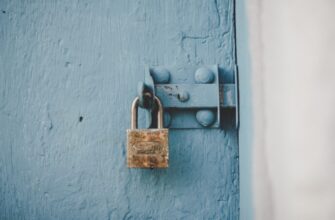In the high-stakes world of cryptocurrency, losing access to your digital assets can mean irreversible financial disaster. Implementing robust backup ledger in cold storage best practices is non-negotiable for serious investors. Cold storage – keeping your private keys completely offline – remains the gold standard for protecting blockchain assets from hackers, malware, and online vulnerabilities. This comprehensive guide reveals critical strategies to secure your ledger backups effectively.
- Why Cold Storage Backup Matters for Your Ledger
- 7 Critical Backup Ledger Cold Storage Best Practices
- 1. Use Dedicated Hardware Wallets
- 2. Implement Multi-Location Storage
- 3. Choose Indestructible Backup Media
- 4. Apply Military-Grade Encryption
- 5. Establish Strict Access Protocols
- 6. Conduct Quarterly Verification Drills
- 7. Maintain Operational Secrecy
- Cold Storage Backup Maintenance Checklist
- Frequently Asked Questions (FAQ)
Why Cold Storage Backup Matters for Your Ledger
Unlike hot wallets connected to the internet, cold storage isolates your cryptographic keys from digital threats. Consider these compelling reasons:
- Hack Immunity: Offline backups are inaccessible to remote attackers
- Physical Control: You retain direct custody of recovery phrases
- Long-Term Preservation: Protects against exchange collapses or platform failures
- Disaster Recovery: Safeguards assets during hardware malfunctions or natural disasters
7 Critical Backup Ledger Cold Storage Best Practices
1. Use Dedicated Hardware Wallets
Opt for purpose-built devices like Ledger Nano or Trezor. These tamper-resistant tools:
- Generate keys in isolated environments
- Feature secure elements against physical breaches
- Enable transaction verification without exposing private keys
2. Implement Multi-Location Storage
Never store all backups in one place. Follow the 3-2-1 rule:
- 3 copies of your recovery phrase
- 2 different storage media (e.g., metal plates + encrypted USB)
- 1 off-site location (safety deposit box or trusted relative)
3. Choose Indestructible Backup Media
Paper backups can burn, smudge, or decay. Upgrade to:
- Stainless steel seed plates (e.g., Cryptosteel)
- Acid-free archival paper with waterproof ink
- Encrypted digital backups on air-gapped devices
4. Apply Military-Grade Encryption
Add an extra security layer with:
- BIP39 passphrases (25th word) for seed encryption
- AES-256 encryption for digital backups
- Shamir’s Secret Sharing for multi-part key division
5. Establish Strict Access Protocols
Control backup accessibility through:
- Biometric-secured safes with fire ratings
- Multi-signature wallet requirements
- Designated emergency contacts with partial access
6. Conduct Quarterly Verification Drills
Test your recovery system every 90 days:
- Retrieve one backup copy
- Restore to a blank hardware wallet
- Verify balance and transaction capability
- Rotate storage locations post-verification
7. Maintain Operational Secrecy
Prevent targeted attacks by:
- Never discussing holdings or storage methods online
- Using privacy screens during backup creation
- Disabling metadata on digital photos of recovery phrases
Cold Storage Backup Maintenance Checklist
Execute these actions annually:
- Inspect physical backups for corrosion or damage
- Update encryption passwords/passphrases
- Confirm accessibility of off-site locations
- Review and revise beneficiary instructions
Frequently Asked Questions (FAQ)
Q: How often should I update cold storage backups?
A: Only when creating new wallets. Existing backups remain valid indefinitely unless you generate new keys.
Q: Can I store multiple ledgers in one cold storage location?
A> Yes, but diversify locations for high-value portfolios. Never keep all assets in a single backup point.
Q: Are cloud backups safe for ledger recovery phrases?
A> Absolutely not. Cloud storage violates the offline principle of cold storage and exposes you to hacking risks.
Q: What temperature damages hardware wallets?
A> Most devices withstand -4°F to 140°F (-20°C to 60°C). Avoid extreme heat near magnets or liquids.
Q: Should I laminate paper backups?
A> Avoid lamination – heat sealing can degrade ink. Use self-laminating sheets or waterproof containers instead.
Q: How do I securely dispose of old backups?
A> Shred paper backups, degauss magnetic media, and physically destroy hardware using professional services.
Implementing these backup ledger in cold storage best practices transforms your cryptocurrency security from vulnerable to virtually impenetrable. Remember: In blockchain, your keys are your kingdom – guard them with the rigor they deserve. Start fortifying your backups today; tomorrow’s security depends on today’s preparation.








